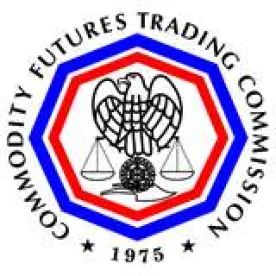On November 25, 2015, the Commodity Futures Trading Commission (the "Commission" or the CFTC) proposed a comprehensive set of new rules ("Regulation AT") that, if adopted, potentially would impose many new obligations on most CFTC registrants that use, or whose customers use, algorithmic trading systems (ATS) to trade futures, options or swaps on a designated contract market (but not on a swap execution facility (SEF)). The impacted registrants include futures commission merchants, introducing brokers, floor brokers, swap dealers, major swap participants, commodity trading advisors and commodity pool operators.[1]
The proposed rules also would affect any futures commission merchant (FCM) that is a clearing member of a designated contract market (DCM) and carries accounts for customers who use ATS, as well as any DCM and any registered futures association (RFA) (a category of entities that currently consists solely of the National Futures Association (NFA)).
The proposed rules also would require any non-registrant that uses an ATS to route electronic orders directly to a DCM to register with the NFA as a floor trader.[2] Importantly, all (1) specified CFTC registrants that engage in algorithmic trading; and (2) persons required by Regulation AT to register as floor traders (collectively, "AT Persons") would be required to maintain copies of all source code used in a live environment, including all changes, in accordance with general CFTC record-keeping requirements (which mandate a five-year retention), and, upon request, make available such source code for inspection by the Commission and US Department of Justice staff without subpoena or other process of law.
Algorithmic Traders
Importantly, under proposed Regulation AT, algorithmic trading is not limited to the black box derivation and electronic placement of orders on DCMs. Covered activity also may include solely automated order placement. There is no minimum number of transactions that constitutes algorithmic trading.
Algorithmic trading is defined broadly to include any trading of any future, option or swap subject to DCM rules where an order, modification, or order cancellation is electronically submitted and one or more computer algorithms or systems:
-
decides whether to initiate, modify or cancel the order, or
-
otherwise makes "determinations" with respect to the order, including but not limited to:
-
the product to be traded;
-
the DCM where the order will be placed;
-
the order type;
-
the order's timing;
-
whether to place the order;
-
the sequencing of the order (compared to other orders);
-
the order price;
-
the order quantity;
-
the partition of the order into smaller components for submission;
-
the number of orders to be placed; or
-
the management of orders after submission.
-
This broad definition likely would capture at least some electronic order entry systems.
All AT Persons will be required to implement certain minimum pre-trade risk controls and other measures "reasonably designed" to avoid a so-called "algorithmic trading event" (see the chart below).[3] Under proposed Regulation AT, an algorithmic trading event occurs when there is (1) a compliance breach of any magnitude (a "compliance issue"), or an operational breakdown that is disruptive at any level (an "trading disruption"). A compliance issue would occur when an AT Person's algorithmic trading does not comply with relevant law, CFTC regulations, or the rules of a relevant DCM or the NFA. Such an issue also would arise when the AT Person's algorithmic trading does not comply with the AT Person's own internal risk controls or other written policies and procedures, or the risk controls and written policies and procedures of its clearing member.
Because an AT Person will be exposed to enforcement risk for failure of any magnitudeto comply with its own written policies and procedures, an AT Person might hesitate before adopting any internal requirement that goes beyond the minimum CFTC requirements, lest there be penalties later for violating a voluntarily adopted higher standard. This requirement also could expose an AT Person to enforcement risk for failure to comply with FCM requirements of which it might not be aware.
A trading disruption would be an event "originating" with an AT Person that "disrupts or materially degrades:"
-
the algorithmic trading of the AT Person;
-
the operation of the DCM where the AT Person is trading; or
-
the ability of other market participants to trade on the DCM where the AT Person is trading.
All AT Persons would be required to implement policies and procedures to prevent "algorithmic trading events" under Regulation AT, with certain additional requirements applicable to FCMs, DCMs and NFA. Such policies and procedures would need to include:
|
|
AT Persons |
FCMs |
DCMs and NFA |
|
Risk Controls |
|
|
|
|
Development, Testing and Monitoring |
|
|
|
|
Compliance Reports |
|
|
|
|
Miscellaneous |
Additionally, all AT Persons must:
|
|
Additionally, all DCMs and NFA must:
|
Regulation AT also would require the NFA to implement and maintain "a program for the prevention of fraudulent and manipulative acts and practices, the protection of the public interest and perfecting the mechanism of trading on designated contract markets…" The CFTC expects the NFA to accomplish this by obligating each category of NFA member to adopt rules that require:
-
pre-trade risk controls and other measures for ATS;
-
standards for developing, testing, and monitoring ATS, and compliance;
-
designation of algorithmic trading staff and provision of training for such persons; and
-
"operational risk management standards" for FCMs for orders originating with algorithmic trading systems."
Although the proposed rule requires the NFA to "establish and maintain a program," the accompanying CFTC release offers the NFA flexibility and discretion in determining what rules it should implement or steps it should take to fulfil its obligation. It is not clear whether the NFA could adopt such a program without amending its Articles of Incorporation.[4]
Costs, Benefits and Miscellaneous
The release that accompanies the proposed Regulation AT includes an extensive discussion regarding the potential costs and benefits of Regulation AT and invites comment on whether its assumptions are accurate. (The CFTC analysis concedes that the cost of implementing the proposed rules will have a deleterious impact on at least some FCMs.)
The proposal contains 164 questions and more than 500 pages. Comments must be received within 90 days of the proposal's publication in the Federal Register. To see the proposal, click here.
The CFTC also has published helpful questions and answers to illustrate the application of Regulation AT. To see the questions and answers, click here.
[1] Existing floor traders appear not to be covered by the CFTC's proposed new rule.
[2] The CFTC estimates there will be a maximum of 100 new floor trader registrants under this proposed new requirement.
[3] The CFTC estimates that approximately 420 persons will qualify as AT Persons and potentially be affected by this requirement.
[4] See current NFA Articles of Incorporation, Article III, Section 2(b) which states that "NFA shall not adopt, administer or enforce upon any Member or Associate a rule, standard, requirement or procedure which purports to govern or otherwise regulate… (iii) The rights, privileges, duties or responsibilities of membership in any Contract Market or Clearing Organization. (iv) The content, interpretation, administration or enforcement of any rule, standard, requirement or procedure of a Contract Market or Clearing Organization."








 />i
/>i

